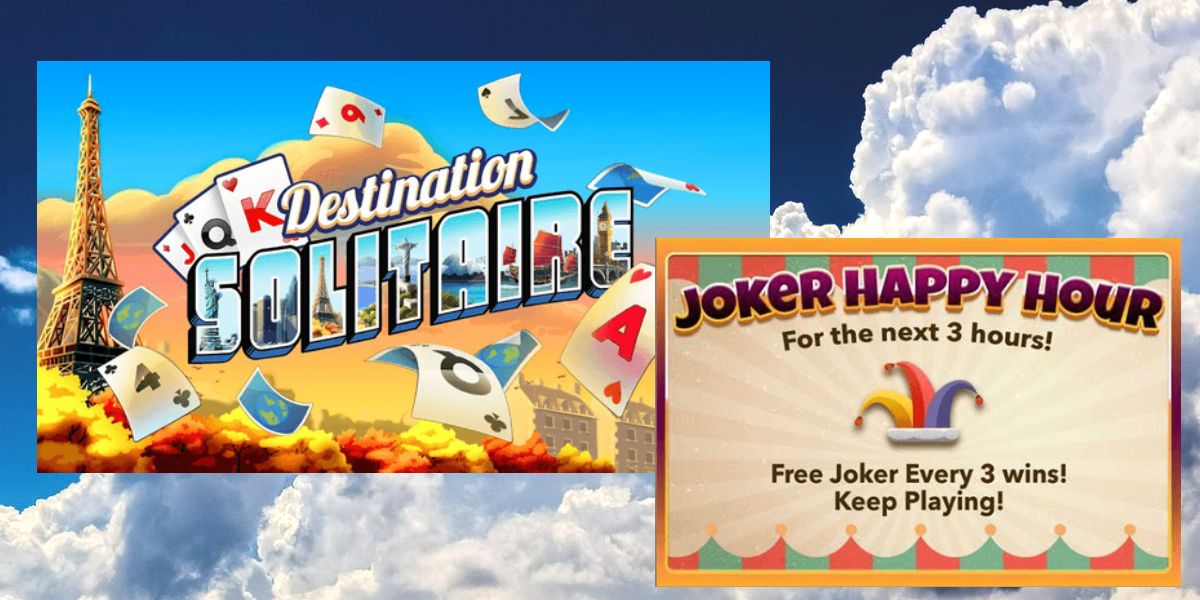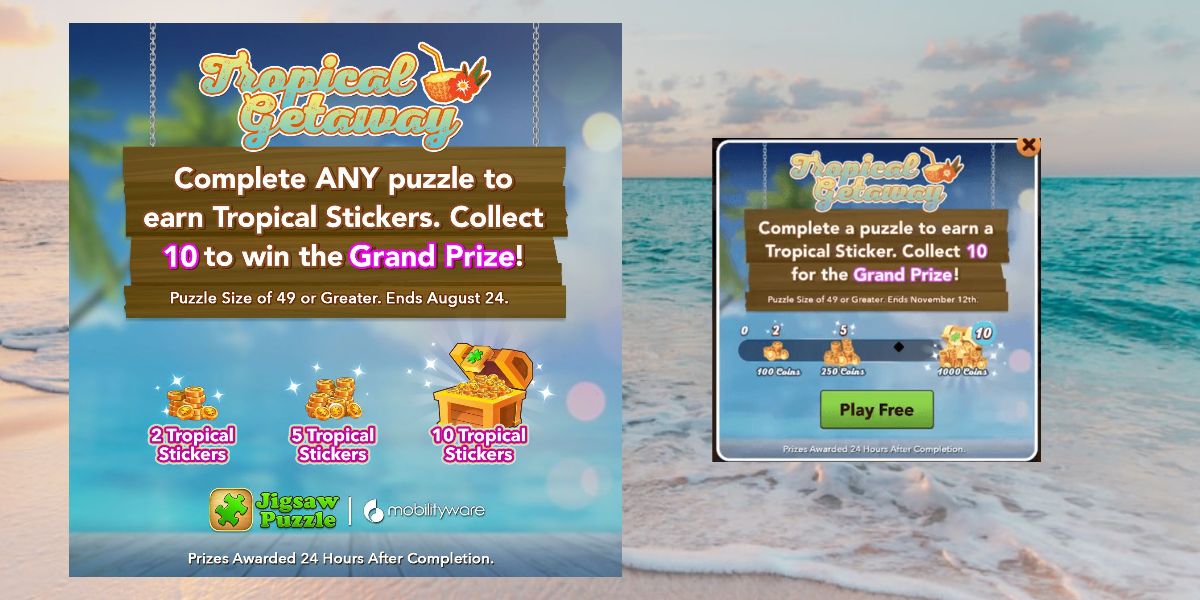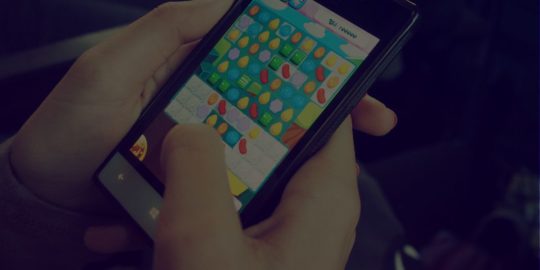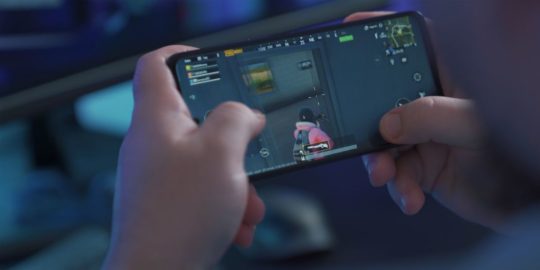In the first part of our series on LiveOps, we talked about the three building blocks of liveops. In the second, we covered how to prepare for your liveops events. Now, we get down to the brass tacks of running the event and making sure you have everything you need to run it smoothly and effectively.
Use In-App Messages to Incentivize Players
Remember that liveops events are made of three building blocks that can be mixed and matched across your entire campaign: the Event Announcement, the Event Confirmation, and the Reward Message.
You’re building an event on top of those three in-app messages — which means engagement is critical. You better build incentives into those messages, with in-game rewards for a player that decides to log into the event.
In simplest terms: “You have a pop-up and then you throw incentives on top,” suggests Larry Hsieh, the Principal Product Manager at MobilityWare in a recent webinar (LiveOps On A Shoestring Budget). “You can easily get double digits on that.”
But where and when do you introduce those in-app messages? The answer lies in testing. By using Leanplum (a CleverTap company) and a rigorous A/B testing regime, Hsieh and his team were able to pinpoint where those messages should appear and when.
Set It Up to Scale
At first, resources were a big challenge for the MobilityWare team, in terms of being able to run their in-game events. It required a lot of time and manpower to set up — not just to prepare the campaigns but also to man the actual event in real time.
For games on a shoestring budget, with little access to IT resources and not enough manpower, your biggest advantage lies in the proper tools that scale successful events and make them easily repeatable. Your tools should allow you to automate the sending of your messages and the monitoring of your KPIs.
Track These KPIs
And speaking of KPIs, the only way to tell if your in-game events are successful is to monitor your engagement metrics. Hsieh of MobilityWare suggests the following KPIs to track for overall engagement:
- DAU and MAU
- Retention rate
- In-app purchase monetization (including subscriptions)
- Ad monetization
- Event-specific KPIs (e.g. tokens collected, puzzles started, levels completed, etc.)
Case Study: Destination Solitaire Promoted Happy Hours
How does a live ops event actually run? Hsieh outlined one of their events — a happy hour every day from 4:00 to 6:00 PM for their virtual card game Destination Solitaire — and why it achieved the results that it did.
Hsieh talks about what led up to building these events: “When we were developing the game, we reached a point where we took the levels as far as we could — ten different worlds in there, 1,000 different levels — but then how do we actually take this to the next level and keep the game going?”
This is where Hsieh’s team brought in live ops. Instead of developing entirely new levels, they instituted seasonal events — a trick-or-treat event for Halloween or an Easter egg hunt — getting players to find different things within different cities.
“So, hey, you’re done with Greece, but if you go back to Greece and start looking for special gift boxes, you can win rewards,” Hsieh says. “So we really tried to modify the paradigm of what was going on with the game to breathe new life or give it a second life, if you will.”
Some of the tactics that they used:
- Push notification to alert players to happy hour
- During happy hour, if players achieve X number of levels, they get free Jokers (a game booster)
- Use live ops to switch objectives around in each game level and keep players engaged

Case Study: Jigsaw Puzzle Built Tropical Getaway With Custom Templates
Another event that MobilityWare ran was the Tropical Getaway for their game, Jigsaw Puzzle. The mechanics are simple: Complete a puzzle, collect a tropical sticker. Collect ten of them and you win a grand prize.
As part of their process, Hsieh and his team built a customizable template of push notifications, in-app messages, and variables to control the gameplay that they would constantly A/B test for effectiveness.
Hsieh says: “Let’s say we did this test and decided we wanted to change the end reward — instead of a thousand coins, let’s say I want to make it 2,000 coins. So then the A/B test was ‘if I could change the end reward, how much does it change the incentive or engagement rate?’” Then, within Leanplum, his team would clone a variant of the existing in-app message where the reward would be 2,000 coins.
To show the player’s progress toward collecting the ten stickers, the team created a custom meter showing each goal and connected these to segments. So, someone who saw one sticker would get a custom image on his in-app message showing one sticker on the meter and be placed in a segment with accompanying text celebrating the achievement.
And they accomplished this without development help — basically using art files (for the meter) and segmentation.

Case Study: TerraGenesis Introduced Limited-Time Content
On an episode of the Mobile Presence podcast, Hunter Bulkeley, Senior Product Manager at Tilting Point, shared how he uses FOMO and time-limited gameplay to boost player engagement.
Bulkeley shares: “The biggest uplift I’ve ever personally achieved was when we introduced limited-time events into TerraGenesis. These were new levels that would come around for 48 hours. The player would have to play through them within that timeframe. It introduced new content; it changed the game mechanics.”
The results? An amazing 20% increase in Day 30 retention. Bulkeley says: “We were able to extend our LTV another 30 days as a result of that as well. Giving users more content in a time-limited way worked very well for us.”
Listen to an excerpt from that podcast below:
A Better Way to Run Your LiveOps Events
With a liveops events approach to game management, you can build a connected gaming community using various tactics that improve the game as it currently stands — even if you only have a shoestring budget and a few resources. Use these strategies above to level up your liveops. And if you need a platform that supports your efforts, get in touch with us.
To learn more about liveops, check out these additional resources:
- Watch the full webinar with MobilityWare, LiveOps on a Shoestring Budget, where we discuss the inner workings of how they use Leanplum for live events.
- Explore our Gaming Apps Data Science Report to see how specific engagement strategies impact retention and revenue.
- Read our article on How to Increase Player Engagement and Revenue for more insights on boosting overall engagement and monetization in mobile gaming.
- Check out the Product Tour to see Leanplum in action.
- Set up a complimentary personalized demo of Leanplum.




